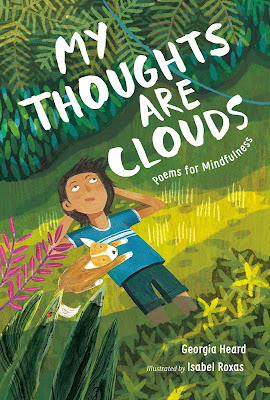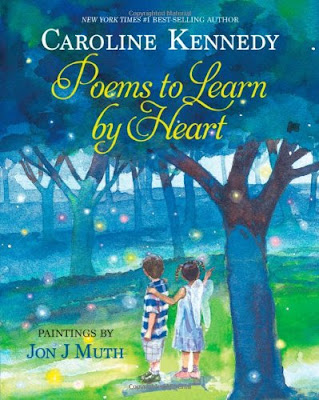World Make Way: New Poems Inspired by Art from The Metropolitan Museum of Art
Bibliography:
Hopkins, Lee Bennett, ed. World Make Way: New Poems Inspired by Art from The Metropolitan Museum of Art. New York: Abrams Books for Young Readers, 2018. ISBN: 978-1419728457
Summary:
In World Make Way, eighteen poets present new poems specifically written in response to eighteen works from the Metropolitan Museum of Art. The drawings and paintings span the centuries and include a diverse representation of world cultures including American, Colombian, Italian, French, Austrian, Japanese, Syrian, Mexican, Native American, Chinese, Indian, and Egyptian artists. The poets themselves are also diverse in culture and poetic style, each interpreting a different work of art in their own way. The foreword, written by editor Lee Bennett Hopkins, explores Leonardo Da Vinci’s quote that “Painting is poetry that is seen rather than felt, and poetry is painting that is felt rather than seen.” Hopkins encourages readers to experiment with their own interpretations of art through poetry. The book concludes with brief biographical entries in two sections entitled “About the Poets” and “About the Artists” as well as a list of credits and an index.Analysis:
Art and poetry are given equal focus in this stunning anthology. Each poetic tribute floats in a white rectangle against a backdrop of color and texture that matches the color palette and mood of the work of art presented on the facing page, so readers can enjoy the interplay between the words and the images that served as their inspiration. The clean design and elegant fonts create an inviting format for experiencing the paired creations. Beneath each piece of art appears its title, year, artist, nationality, and medium. Some poems take their titles from the art, but others invent their own.
In “Paint Me,” Marilyn Singer gives voice to a young girl, the subject of a painting by Gustav Klimt, humorously beginning with the line, “Hurry up and / paint me.” The girl’s flat expression, wide stance, and hand firmly planted on her hip inspired Singer to rhyme, “I cannot spare more hours. / I’m tired of this dress, these flowers.”
In a poem by Guadalupe Garcia McCall, a Mexican wood engraving called Skeletons as artisans comes to life with rhythm, rhyme, and alliteration as the skeletons chant the actions of their respective trades: “Ti-ki-ri, ti-ki-ri, ti-ki-ri, tas! / Look at us lift our humerus over / our skulls. We hammer and beat. / We breathe life into molten glass, / emboss leather, and buff out brass.” The tone and energy of the art is perfectly mirrored in the exuberant chanting of the poem.
Julie Fogliano’s “Cat Watching a Spider,” inspired by a Japanese silk album leaf of the same name, is deceptively simple, only seven lines long. However, when the poem is read aloud, its delicate alliteration and rhyme create a satisfying effect that begs for memorization: “so silent and certain / a spider / can cause / a watchful and wondering cat / to pause / all prowl and prance / and teeth and claws”.
Two poems, both written from the perspective of horses, take dramatically different approaches that match the style and tone of their respective source material. First, inspired by a French painting by Rosa Bonheur, Cynthia Cotten imagines the horse defying its handler: “Thinks he can subdue me, / stifle my spirit, / bend me / to / his will.” In contrast, the speaker of the poem “Night-Shining White” based on a Chinese handscroll from the Tang Dynasty, celebrates his service to the emperor: “I am charger, / a stout-hearted steed. / I race into battle-- / taking the lead. / The emperor’s favorite, / I don’t fear a fight. / I’m daring and brave. / I am Night-Shining White.” These two poems juxtaposed create a fascinating study in contrasting perspectives.
World Make Way is a gorgeous, inventive book and a work of art in itself. Readers will be inspired by the unique and sometimes unexpected interpretations of the paintings, and will be encouraged to create their own art-based poems. As Marilyn Nelson writes in her poem, “no matter who you are, you can make art.”
Excerpt and Activity:
Display the painting Approaching Thunder Storm (1859) by Martin Johnson Heade for students to see before reading its companion poem. Ask: “What do you think the man and his dog are thinking about?”
“My Dog and I”
by Ann Whiteford Paul
My dog and I
Sit,
watch
the tufted cloud quilt
spread overhead,
hiding the listless sun,
painting the leaden sky
dull
dark,
dreary.
My dog and I should leave
before that quilt
spills its chilly wet.
But here we sit,
my dog and I,
each waiting
for the other
to make
the first move.
Extension Activity:
Explore more art on the Metropolitan Museum of Art website or plan a trip to a local art museum.
Invite students to choose a piece of art that speaks to them and use it as the source material for an original poem. (Be sure to ask students to record the artist’s name and title of the work.)
Display student poetry paired with prints or postcards of the artwork in the library.




Comments
Post a Comment